Products Resources
Products Resources
UV–vis spectrometers
Thermo's UV–vis spectrophotometers are designed for research and routine analysis. The GENESYS 10S spectrophotometers reportedly provide scanning rates of up to 4200 nm/min, and accessories such as Peltier temperature control and long-pathlength cell holders are available. The BioMate 3S instrument, which includes built-in biological test methods, provides 1.8-nm resolution and a xenon light source that requires no warm-up time. The spectrophotometers also include embedded software with local instrument control. Thermo Fisher Scientific, Inc., Madison, WI;
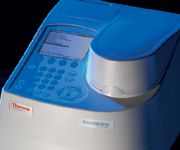
Heated FT-IR gas cell
The zephIR heated long pass FT-IR gas cell from Polarmetrics Corporation is designed to measure actual gas temperature and preheating of the sample and optics. According to the company, the cell's low internal volume allows for less waste of gas products and low purge times. Polarmetrics Corporation, Middleton, WI;

DC arc spectrometer
Teledyne Leeman Labs' Prodigy DC arc spectrometer is designed for fast trace element analyses of difficult samples. The spectrometer reportedly provides low detection limits and fast turnaround times. According to the company, the instrument can be used to analyze samples such as ceramics, refractory powders, graphite, geological materials, nuclear materials, soils, sludges, and ashes. Teledyne Leeman Labs, Hudson, NH;

Bandpass interference filters
Hard-coated bandpass interference filters from Edmund Optics are designed for biotech, biomedical, and quantitative chemical applications. The filters selectively transmit a narrow range of wavelengths while blocking others. According to the company, the filters are fabricated with a plasma reactive sputtering coating that produces single-substrated filters with deeper blocking, higher transmission, and steeper slopes than soft-coated filters. The filters are available in UV, visible, and IR wavelengths with 10–80 nm bandwidths. Edmund Optics Inc., Barrington, NJ;
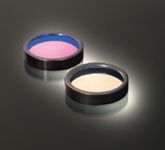
Absorptive wire-grid polarizers
Moxtek's absorptive wire-grid polarizers are intended for narrow-band applications and for applications in which back reflection is a concern. The polarizers reportedly transmit the p-polarization and absorb the s-polarization of incident light rather than reflecting unwanted light away from the polarizer. According to the company, the polarizers are available with diameters as large as 8 in. for use in consumer displays, scientific instruments, and industrial and military applications in the UV, visible, and IR wavelength ranges. Moxtek, Inc., Orem, UT;
www.moxtek.com/optics/absorptive.html
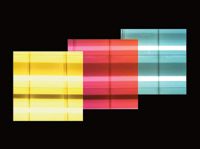
FT-IR purge gas generators
FT-IR purge gas generators from Parker Hannifin are designed to replace laboratory gas cylinders for use with FT-IR spectrometers. According to the company, the generators use standard compressed air to provide a purified purge gas and air bearing gas. The generators reportedly remove impurities such as water vapor and carbon dioxide to –100 °F pressure dew point and less than 1 ppm, respectively. Models are available with flow capacities ranging from 3.1 L/min to 102 L/min. Parker Hannifin Corporation, Haverhill, MA;

Electron generator arrays
ELECTROGEN electron generator arrays from PHOTONIS USA are designed to be a "cold" electron source that provides a large dense electron flux and requires no warm-up time. The arrays reportedly consist of millions of precision glass tubes fused together to create a mechanically rigid structure. According to the company, the arrays can be used as the electron source in electron impact ionization sources for beam line monitoring, display devices, electron scrub sources, wafer discharge, and ion and electron impact ionization. The arrays are available in sizes ranging from 3 mm to 150 mm. PHOTONIS USA, Sturbridge, MA;
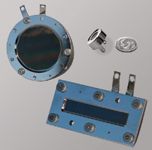
Inorganic materials database
The PDF-4+ 2009 database from the International Centre for Diffraction Data includes 291,440 inorganic materials data sets for phase identification using physical, chemical, and crystallographic data. The database reportedly provides features such as digitized patterns, molecular graphics, and atomic parameters. Other features include electron diffraction simulations based on atomic structure and electron diffraction scattering factors on more than 260,000 data sets. International Centre for Diffraction Data (ICDD), Newtown Square, PA;

ICP spectrometer
The iCAP 6000 Series ICP emission spectrometer from Thermo Fisher Scientific is designed for trace element analyses in high-throughput elemental analysis laboratories. According to the company, the instrument has been used successfully in analyzing feedstock and biodiesel to be sold as fuel or blending stock. The spectrometer reportedly enabled improved productivity and ensured regulatory compliance. Thermo Fisher Scientific, Waltham, MA;
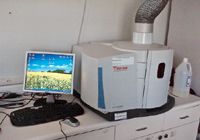
Thin-film measurement systems
Thin-film measurement systems from StellarNet come with the necessary instrumentation and software to analyze multilayer (up to five), freestanding, rough, and thick and thin layer structures. The noncontact systems reportedly measure thickness and optical constants quickly using reflectance or transmittance spectroscopy. The instruments include USB2 connectivity and software for measurements with user-configurable methods. According to the company, supported parameterized materials include Cauchy, Sellmeir, EMA, harmonic oscillator, Tauc-Lorentz oscillator, Drude-Lorentz, and others. StellarNet, Inc., Tampa, FL;
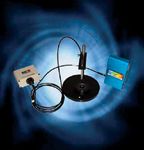
Spectrometer catalog
Avantes' 160-page catalog VII describes the company's AvaSpec-ULS two-stage Peltier-cooled NIR spectrometer and accessories. According to the company, the catalog lists more than 100 new products and applications. The catalog also describes the Avasphere-50-LS-HAL integrating sphere with an internal halogen light source. The catalog is available on the company's website. Avantes Inc., Broomfield, CO;
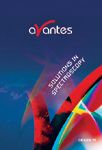
Red DPSS laser
The SLIM-660 red laser from Oxxius emits 50 mW at 660 nm. According to the company, the laser's monolithic resonator ensures less than 1 MHz linewidth, pointing stability less than 5 μrad, and power consumption as low as 10 W. Applications for the red DPSS laser include Raman spectroscopy, holography, laser Doppler velocimetry, and fluorescence spectroscopy. Oxxius, Lannion, France;

Inorganic standards catalog
Inorganic Ventures' 2010–2011 catalog of inorganic reference materials includes standards for ICP, ICP-MS, IC, AA, and wet chemistry applications. Standards are color-coded by application and indexed by catalog number and subject. Inorganic Ventures, Christiansburg, VA;
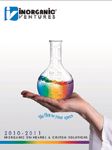
ICP check standards
The Claritas PPT ICP check standards from SPEX CertiPrep include a 55-element tuning solution for MS instruments, a mass analyzer standard containing monoisotopic elements to be used as an instrument check for any MS system, and an isotopic ratio measurement standard. The standards reportedly are supplied with a certificate of analysis that provides information about up to 68 trace impurities measured at parts-per-trillion levels. According to the company, the standards are tested under an ISO 9001:2000 quality assurance program and manufactured under a quality system complying with the requirements of ISO/IEC 17025 and ISO/IEC Guide 34-2000. SPEX CertiPrep, Inc., Metuchen, NJ;
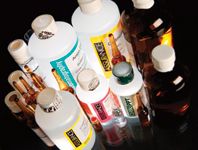
Photovoltaic measurement system
Newport Corporation's Oriel IQE-200 photovoltaic cell measurement system is designed for simultaneous measurement of the external and internal quantum efficiency of solar cells, detectors, and other photon-to-charge converting devices. The system reportedly splits the beam to allow for concurrent measurements. The system includes a light source, a monochromator, and related electronics and software. According to the company, the system can be used for the measurement of silicon-based cells, amorphous and mono/poly crystalline, thin-film cells, copper indium gallium diselenide, and cadmium telluride. Newport Corporation, Irvine, CA;
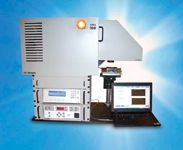
Raman microscope
Renishaw's inVia Raman microscope can be used for nondestructive testing of sperm DNA for assessing the healthiness of sperm cells. The instrument can be customized to integrate optical tweezing, which enables researchers to immobilize sperm cells with a tightly focused laser beam. The resulting Raman spectra contain information about the vibrations of molecules within the sperm cells and can be used to assess the state of its DNA. Renishaw, Hoffman Estates, IL;

Glass vials
RSA Glass autosampler vials and inserts from MicroSolv Technology are made from reduced surface activity glass. According to the company, the glass is not coated or silanized but lacks silanols and other typical glass surface contaminants. The vials reportedly are available as 9-425 screw top, 2-mL snap cap, and low volume, 12 × 32 mm vials, including the company's MRQ vial. The vials are designed for use with basic compounds that are in low abundance, such as proteins, peptides, and basic drugs. MicroSolv Technology Corporation, Eatontown, NJ;

FT-IR spectrometer
PerkinElmer's Spectrum 65 FT-IR spectrometer is based on the company's Dynascan interferometer. According to the company, the instrument is designed for the everyday IR analyst. PerkinElmer, Inc., Shelton, CT;
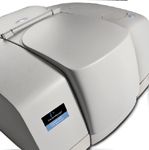
Echelle spectrograph
The Mechelle ME5000 echelle spectrograph from Andor is designed to provide simultaneous recording of the 230–975 nm wavelength range in one acquisition. The spectrograph reportedly has no moving components and is available in a prealigned detector–spectrometer format. According to the company, the spectrograph's optical design provides low cross-talk and maximum resolution compared with other spectrographs. Andor Technology, South Windsor, CT;
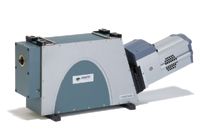
Raman microscope
The μSense-I Raman microscope from Enwave is designed for nonconfocal microscopic Raman applications in academic, industrial, and research laboratories. The microscope reportedly provides a spectral resolution of -6 cm-1, a spectral range of ~250–2350 nm, and spatial resolution of better than 5 μm. The instrument's Raman unit can be detached from the microscope and used as a portable instrument. Enwave Optronics, Inc., Irvine, CA;
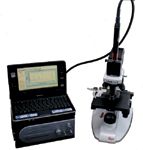
Mercury analyzer
The model RA-3000 Gold+AFS mercury analyzer from Nippon Instruments is designed for EPA Method 1631E. According to the company, the analyzer simplifies low- to sub-parts-per-million mercury analysis and reduces reagent consumption and wastes. Nippon Instruments North America, College Station, TX;
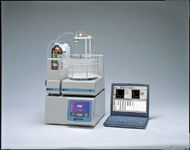
Silicon drift detectors
The XR-100SDD and X-123 SDD silicon drift detectors from Amptek are designed for X-ray fluorescence applications ranging from OEM handheld instruments to bench-top analyzers. According to the company, the silicon drift detectors enable extremely high count rate applications and require no liquid nitrogen. The detectors reportedly are housed inside the same TO-8 package as the company's other detectors. Amptek, Inc., Bedford, MA;
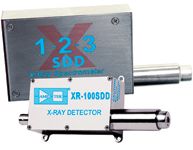
FT-IR spectrometer
The IRAffinity-1 FT-IR spectrometer from Shimadzu Scientific Instruments is designed for high-precision IR analysis to confirm, identify, and detect foreign matter in various application areas. According to the company, the instrument features long-term stability, protection from humidity, increased reliability, and analysis-support programs. Shimadzu Scientific Instruments, Inc., Columbia, MD;
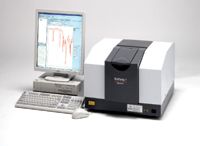
UV–vis–NIR spectrometer
The model LF-500 fiber-optic input UV–vis–NIR spectrometer from Spectral Evolution has a wavelength range of 320–1100 nm. According to the company, the fiber input provides a variety of sample-interfacing configurations and the optical system matched fiber optics provides an optimal signal-to-noise ratio. Other features include on-board calibration, storage, shutter–dark scan, and automatic exposure. Applications include water–moisture, refining, petrochemical, food, and polymers. Spectral Evolution, North Andover, MA;
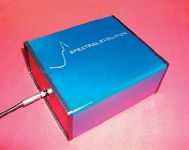
ATR accessory
The GladiATR Vision attenuated total reflection device is designed to couple small-area infrared analysis with simultaneous viewing. According to the company, the device's diamond crystal enables analysis of thick or nontransparent samples. The accessory reportedly is compatible with most FT-IR spectrometers. Pike Technologies, Madison, WI;
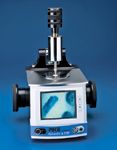
NIR minispectrometer
Hamamatsu's TG long-wavelength type near-infrared minispectrometer is a polychromator integrated with optical elements and an image sensor. Light to be measured is guided into the instrument's entrance port via an optical fiber, and the spectrum is measured with the built-in image sensor and output from a USB port to a PC for data acquisition. According to the company, the instrument's sensitivity extends to wavelengths as long as 2.55 μm. Hamamatsu Corporation, Bridgewater, NJ;
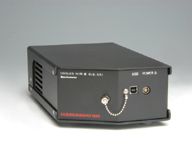
Elemental and depth profile analyzer
The GD-Profiler 2 instrument from HORIBA Scientific couples a flexible RF glow discharge excitation source to optics for elemental bulk, surface, and depth-profile analysis. The system, which is designed for surface and interface characterization, uses controlled sputtering of a material by a 4-mm diameter plasma and analyzes all elements including gases (N, O, H, Cl) as a function of the depth in conductive or nonconductive layers and substrates. According to the company, depth resolution can be as high as 1 nm, with a sputtering rate as fast as several micrometers per minute. HORIBA Scientific, Edison, NJ;

FT-NIR analyzer
ABB's MB3600-PH FT-NIR analyzer is designed for QA–QC, research and development, raw materials identification and qualification, NIR method development, and at-line PAT applications. According to the company, the benchtop analyzer can be fitted with various accessories for measurements in pharmaceutical and life science applications. ABB, Quebec, Canada;

Air-jet sieve
The AS 200 Jet air-jet sieve is designed for separating light, fine particle sizes. The sieve is intended for use with 203-mm (8-in.) diameter sieves as small as 10 μm (~1200 mesh). According to the company, an industrial vacuum generates a jet of air that evenly disperses the particles via a slotted nozzle. The material that passes through the sieve is either discarded through the vacuum or collected in an attached cyclone. The procedure reportedly requires 2–3 min. Retsch, Inc., Newtown, PA;
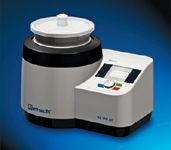
Raman microscope with AFM
WITec's alpha500 confocal Raman microscope is designed to combine 3-D chemical imaging and atomic force microscopy for structural imaging in an automated system. The system includes a motorized sample stage that allows multiarea, multipoint measurements or overview scans on a user-defined number of points. The system's automated functions include integrated autofocus and an AFM-tip approach. WITec Instruments Corp., Savoy, IL;
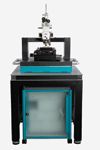
Optical filters
Optical filters designed with sputtered coatings are available from CVI Melles Griot. The narrowband, broadband, and edge filters for fluorescence, microscopy, flow cytometry, and image processing reportedly provide 5–6 OD blocking and maintain a transmission of greater than 98%. According to the company, standard and custom designs are available. CVI Melles Griot, Carlsbad, CA;
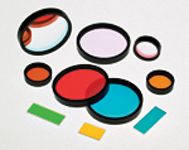
Holographic polarizer
Specac's holographic polarizers are available on barium fluoride, calcium fluoride, KRS-5, and zinc selenide substrates and are manufactured at 2500 lines/mm. The polarizers are available in standard sizes of 25 mm or 50 mm diameter. Applications include the polarization of radiation for unpolarized sources, attenuation of radiation from polarized sources, infrared spectroscopy of materials, and NIR and mid-IR thermal imaging. Specac, Inc., Woodstock, GA;
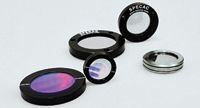

Fiber Optics and Neural Networks Transform Vehicle Sensing and Road Safety
April 7th 2025A cutting-edge fiber optic sensing system, developed by researchers at Tongji University, leverages neural networks to classify vehicles with unprecedented accuracy. The system’s innovative design uses spectroscopic and optical sensor technologies to provide critical data for road maintenance and traffic management.
Advancing Corrosion Resistance in Additively Manufactured Titanium Alloys Through Heat Treatment
April 7th 2025Researchers have demonstrated that heat treatment significantly enhances the corrosion resistance of additively manufactured TC4 titanium alloy by transforming its microstructure, offering valuable insights for aerospace applications.
Best of the Week: Exclusive on Flow Imaging Microscopy, Interview with PNNL Chief Science Officer
April 4th 2025Top articles published this week include several interviews with key opinion leaders on various topics including advanced mass spectrometry (MS) technologies in studying diseases, microplastic detection, and interpreting Raman spectra.















